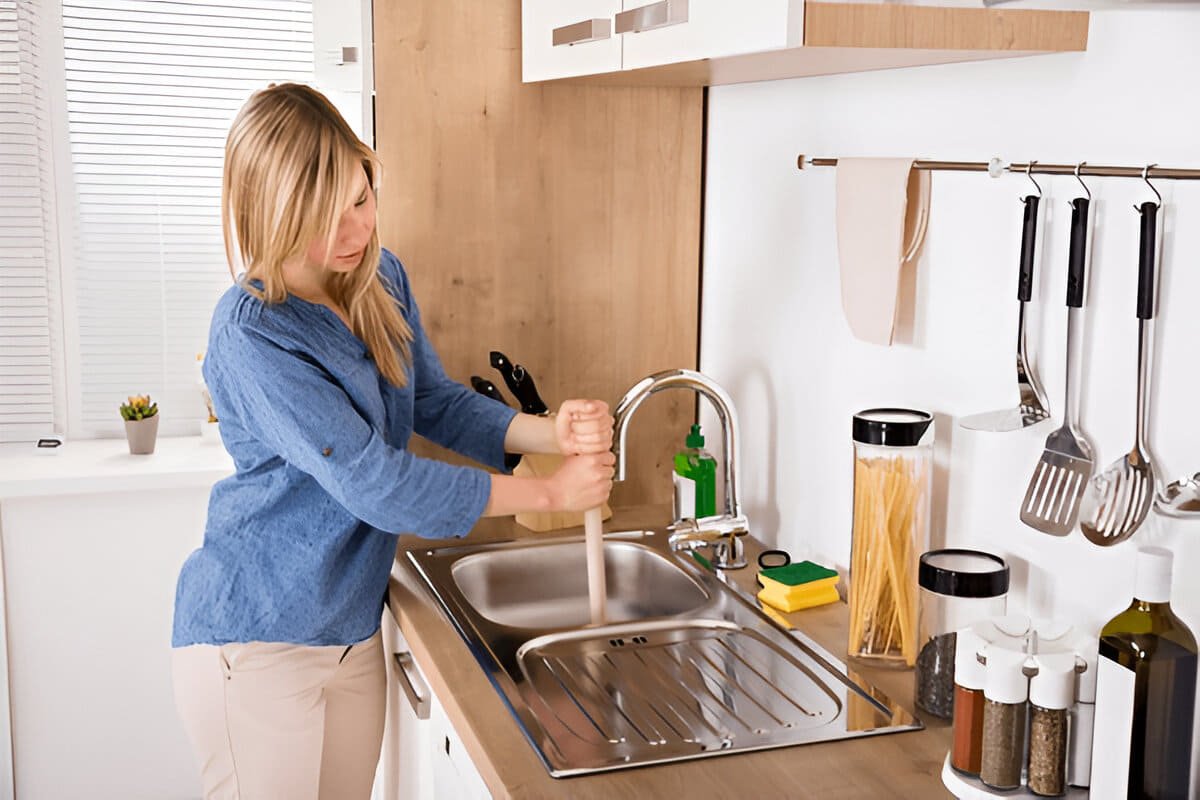The ultimate solution to blocked drains lies in combining daily preventive habits with strategic infrastructure upgrades. This comprehensive guide delivers actionable strategies to prevent drain blockages permanently, saving you from costly repairs and property damage. By implementing these expert-recommended practices, you’ll maintain free-flowing drains and avoid plumbing emergencies.
Recognizing the Early Warning Signs
Catching drainage issues early prevents minor clogs from becoming catastrophic failures. Watch for these critical indicators:
- Slow drainage patterns: Water pooling around shower ankles or sinks emptying gradually signals developing obstructions. This often precedes complete blockages.
- Gurgling acoustics: Strange sounds from pipes indicate air trapped by debris barriers. These noises intensify as blockages worsen.
- Unpleasant sewage odors: Foul smells emanating from drains signal decomposing waste trapped in pipes. This occurs when organic matter accumulates and rots.
- Water backflow incidents: Overflowing toilets or water reversing into sinks indicates main-line sewer blockages requiring immediate intervention.
Primary Causes of Drain Blockages
Understanding these common culprits helps target prevention strategies:
- Tree root intrusion: Responsible for approximately 80% of blocked drains in Australia, roots penetrate pipe joints seeking moisture. They expand inside pipes, capturing debris and causing major obstructions.
- Fatberg formations: Cooking fats mixed with soap create concrete-like deposits that trap food particles. Just 1 cup of oil can coat 30 feet of piping.
- Hair and soap combinations: Each strand’s scaly surface interlocks with others, creating nets that capture soap residue. This creates dense mats that reduce pipe capacity by up to 90% over time.
- Flushed foreign objects: Wet wipes, hygiene products, and “flushable” items cause 75% of toilet blockages. During an ordinary week, Yarra Valley Water retrieves nearly 14 tonnes of wipes from sewers.
Daily Habits for Drain Protection
Implement these essential practices to maintain clear pipes:
- Install precision drain covers: Mesh screens capture 95% of hair and debris before entry. Clean them weekly under running water.
- Proper grease disposal: Wipe cookware with paper towels before washing. Collect cooled fats in containers for trash disposal—never pour down sinks.
- Hot water flushing ritual: Weekly treatments with boiling water and dish soap melt developing grease deposits. Add 2 tablespoons detergent per 4 cups water.
- Hair containment protocol: Brush before showering and install shower drain catchers. Remove trapped hair after each use.
- Food waste management: Use compost bins for scraps instead of garbage disposals. Never put coffee grounds, pasta, or rice down drains—they expand 3x when wet.
Table: Drain Maintenance Schedule
| Frequency | Task | Method |
|---|---|---|
| Daily | Sink strainer cleaning | Remove debris under running water |
| Weekly | Hot water flush | Boiling water + dish soap mixture |
| Monthly | Natural pipe cleaning | Baking soda + vinegar solution |
| Quarterly | Professional inspection | CCTV drain camera survey |
Infrastructure Upgrades for Lasting Prevention
Invest in these solutions for comprehensive protection:
- Gutter guard installation: Mesh barriers prevent leaf accumulation in stormwater systems—critical for preventing outdoor drain blockages during heavy rains.
- Strategic landscaping: Plant trees at least 10 feet from drainage lines. Choose slow-growing species with non-invasive root systems.
- French drain systems: Redirect groundwater away from foundations using gravel-filled trenches with sloped pipes—ideal for chronically soggy yards.
- Pipe relining technology: For aging pipes, trenchless epoxy resin coatings seal cracks and prevent root intrusion without excavation.
Effective DIY Solutions for Minor Clogs
When prevention fails, try these safe interventions:
- Drain augering technique: Insert a flexible snake into pipes and rotate clockwise to hook hair clumps and debris. Effective for shallow obstructions within 5 feet of access points.
- Natural dissolving solution: Combine 1 cup baking soda with 2 cups vinegar. The chemical reaction breaks down organic matter without pipe damage. Follow with boiling water after 30 minutes.
- Plunger power methods: Create tight seals over drains. Use 15-20 vigorous pumps for sinks and toilets. Submerge the bell completely for maximum pressure.
- High-pressure hose blasting: Insert garden sprayers into outdoor drains to dislodge soil and leaves. Use 45-degree nozzle attachments for optimal force.

When to Call Professional Drain Specialists
Certain situations demand expert intervention:
- Recurring blockages: Multiple clogs monthly indicate deep-seated issues like pipe misalignment or root infiltration.
- Sewage backup emergencies: Wastewater entering showers or sinks requires immediate professional attention due to health hazards.
- Structural damage indicators: Sinkholes, eroded soil, or foundation cracks suggest broken pipes needing camera diagnosis.
- Stormwater system failures: Pooling water around property drains after rain signals complex blockages requiring hydro-jetting equipment that delivers water pressure up to 4,000 PSI.
Table: DIY vs Professional Solutions
| Situation | DIY Approach | Professional Solution |
|---|---|---|
| Slow drains | Baking soda/vinegar | Hydro-jetting |
| Recurring clogs | Plunging | CCTV camera inspection |
| Tree root intrusion | Salt water flush | Trenchless pipe relining |
| Sewage odors | Hot water flush | Main line clearing |
| Multiple blocked drains | Drain snake | Pipe replacement |
For residents addressing blocked drains Ferntree Gully, specialized services like Fast Direct Plumbing offer CCTV diagnostics to pinpoint issues without property damage. Their hydro-jetting technology clears even the most stubborn outdoor blockages.
Long-Term Drain Maintenance Protocol
Sustain optimal drainage with these advanced strategies:
- Professional CCTV inspections: Annual camera surveys detect root intrusion, cracks, and buildup years before failures occur. Reports detail pipe conditions with timestamped video evidence.
- Scheduled hydro-jetting: High-pressure cleaning every 18-24 months scours pipe walls completely, removing all debris and roots. More effective than mechanical snaking.
- Pipe condition documentation: Maintain inspection records to track deterioration rates. This helps prioritize replacements before emergencies strike.
- Water pressure regulation: Install pressure-reducing valves if PSI exceeds. Excessive force stresses pipes and joints, accelerating leaks.
Conclusion: Your Blueprint for Drain Longevity
Permanently defeating drain blockages requires vigilance through daily habits, infrastructure investments, and professional partnerships. By implementing the protocols in this guide—from installing drain screens to scheduling hydro-jetting—you’ll avoid over 90% of common plumbing emergencies. Remember that persistent issues signal deeper problems needing expert diagnosis, especially for homeowners managing blocked drains Ferntree Gully where tree roots and stormwater complications demand localized solutions. Protect your property and peace of mind by making drain care an integral part of home maintenance.




